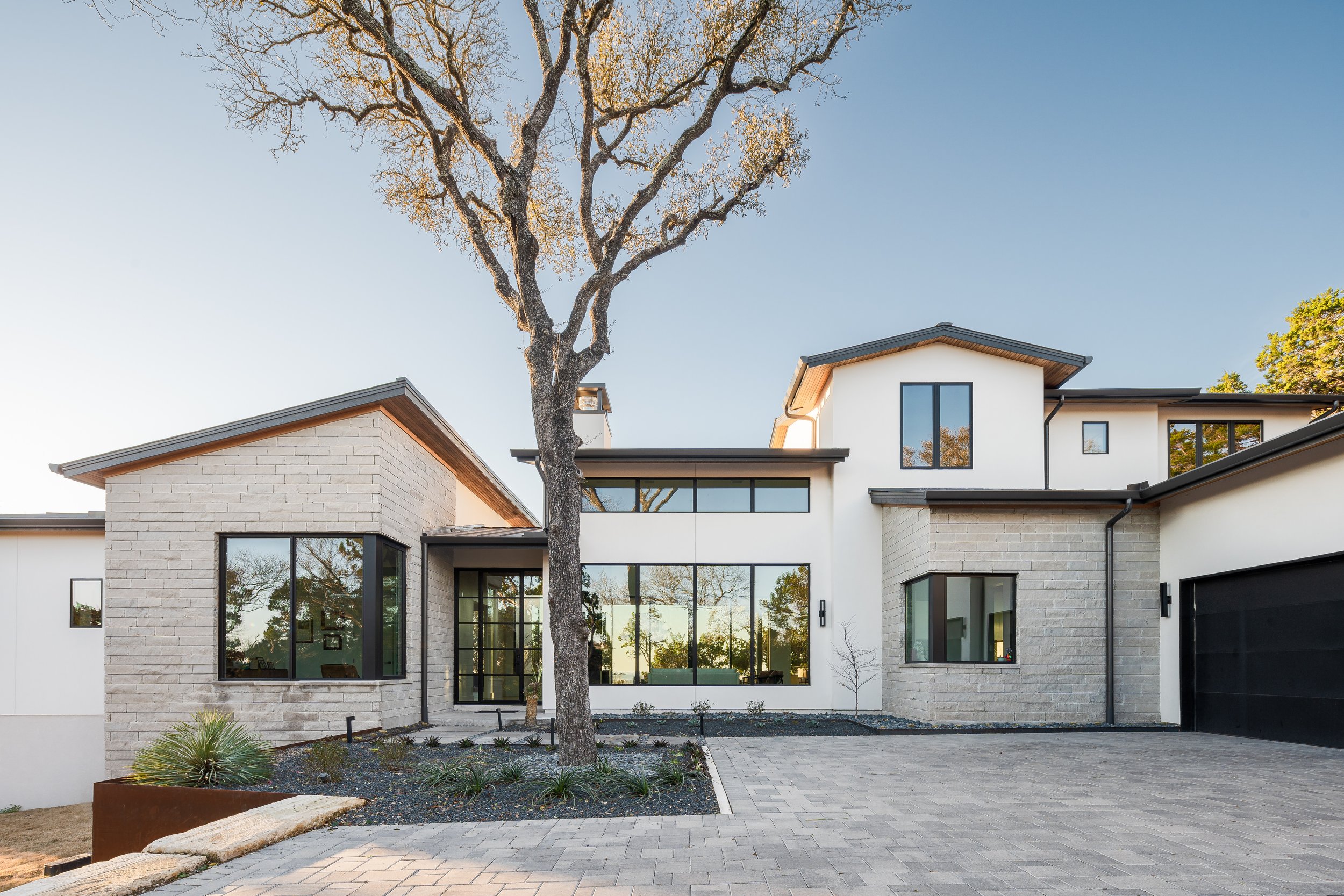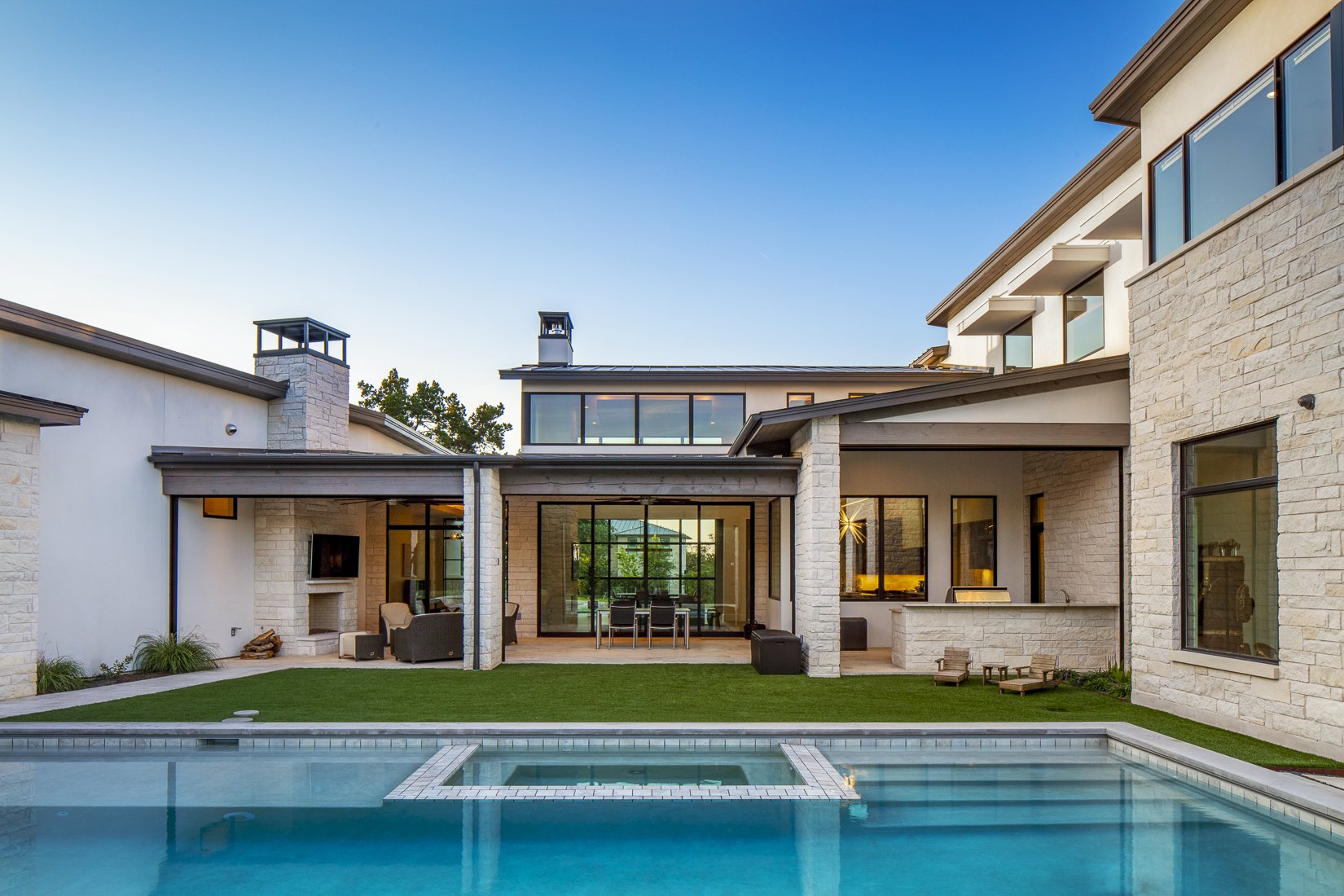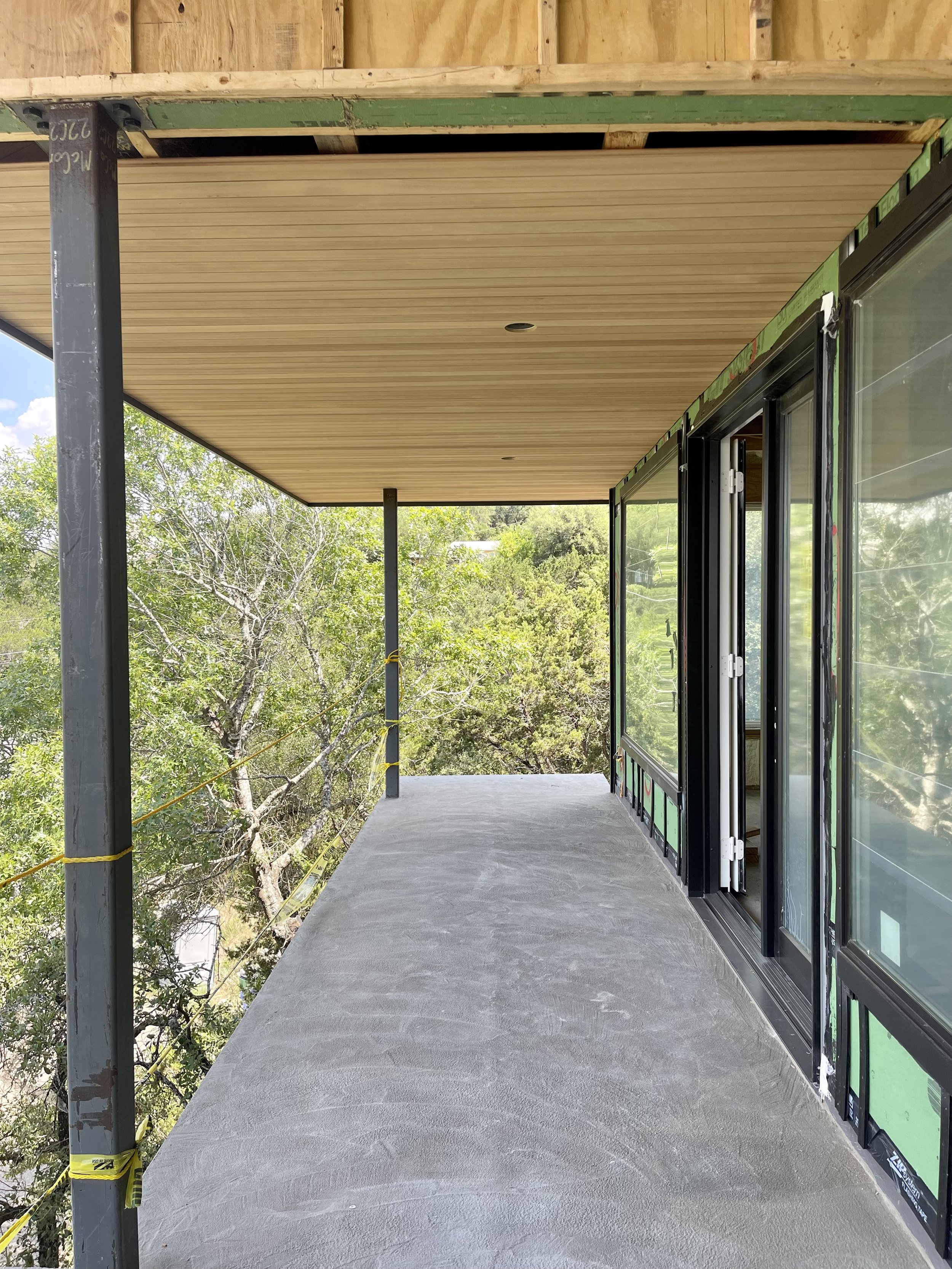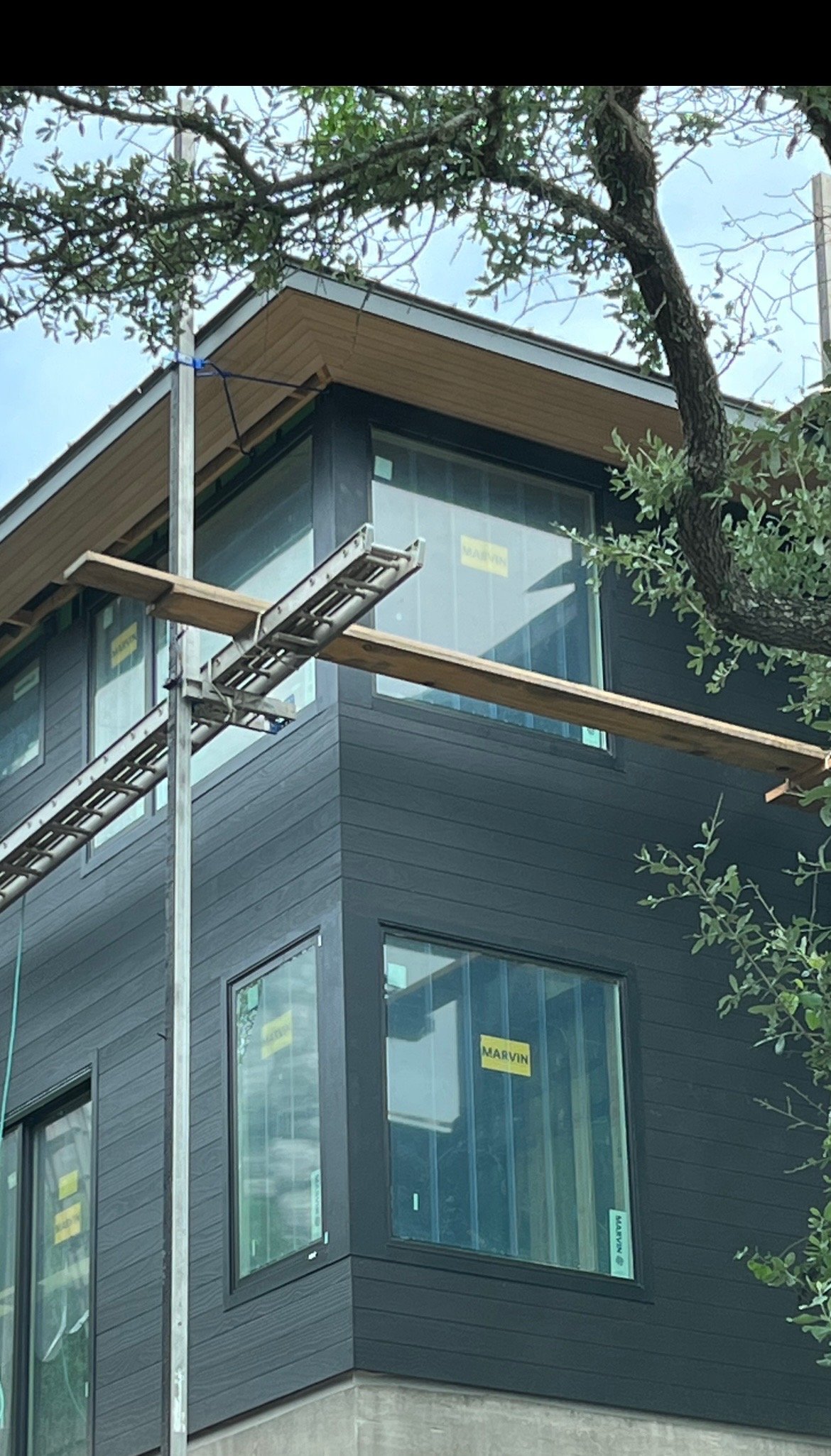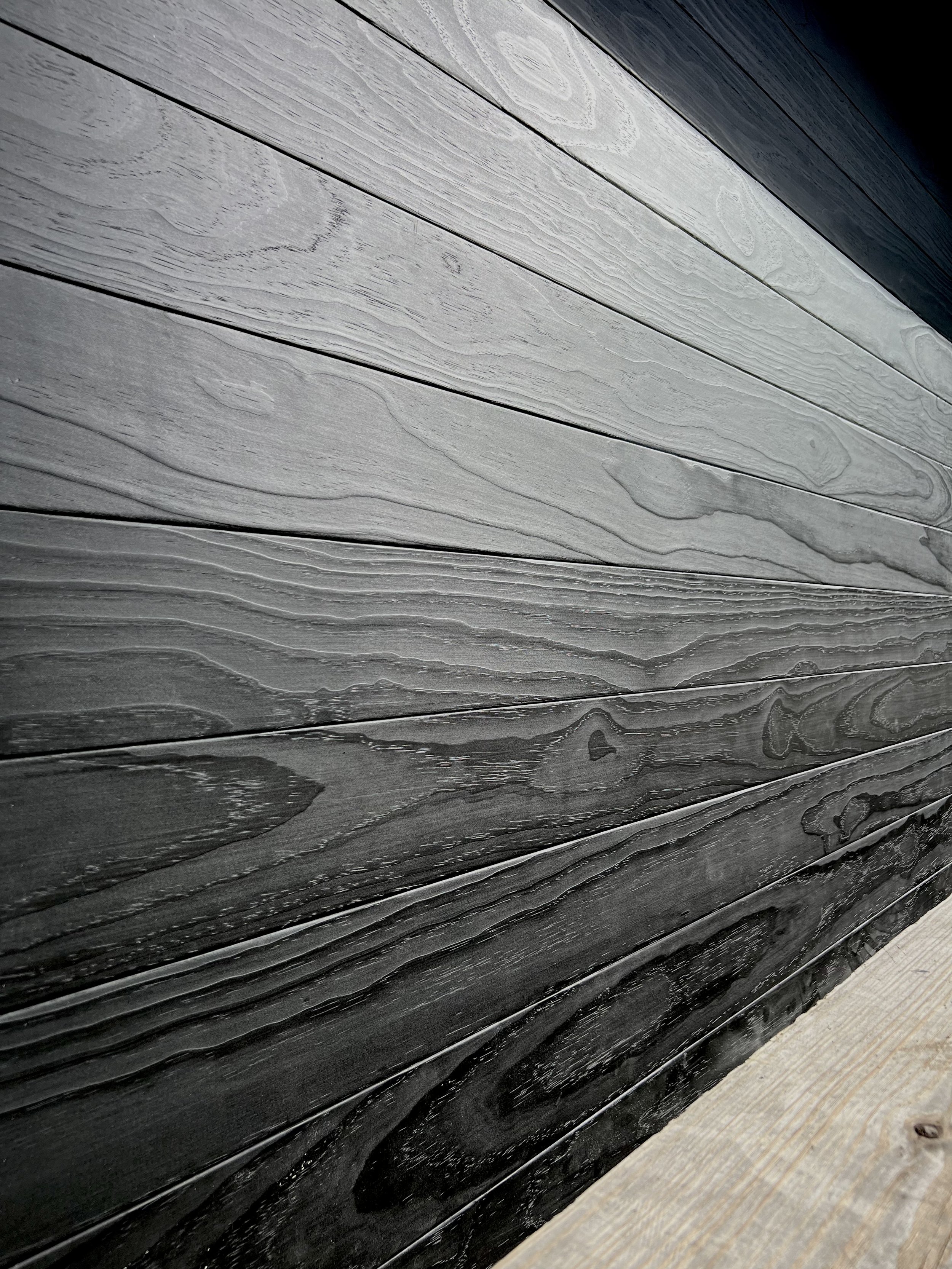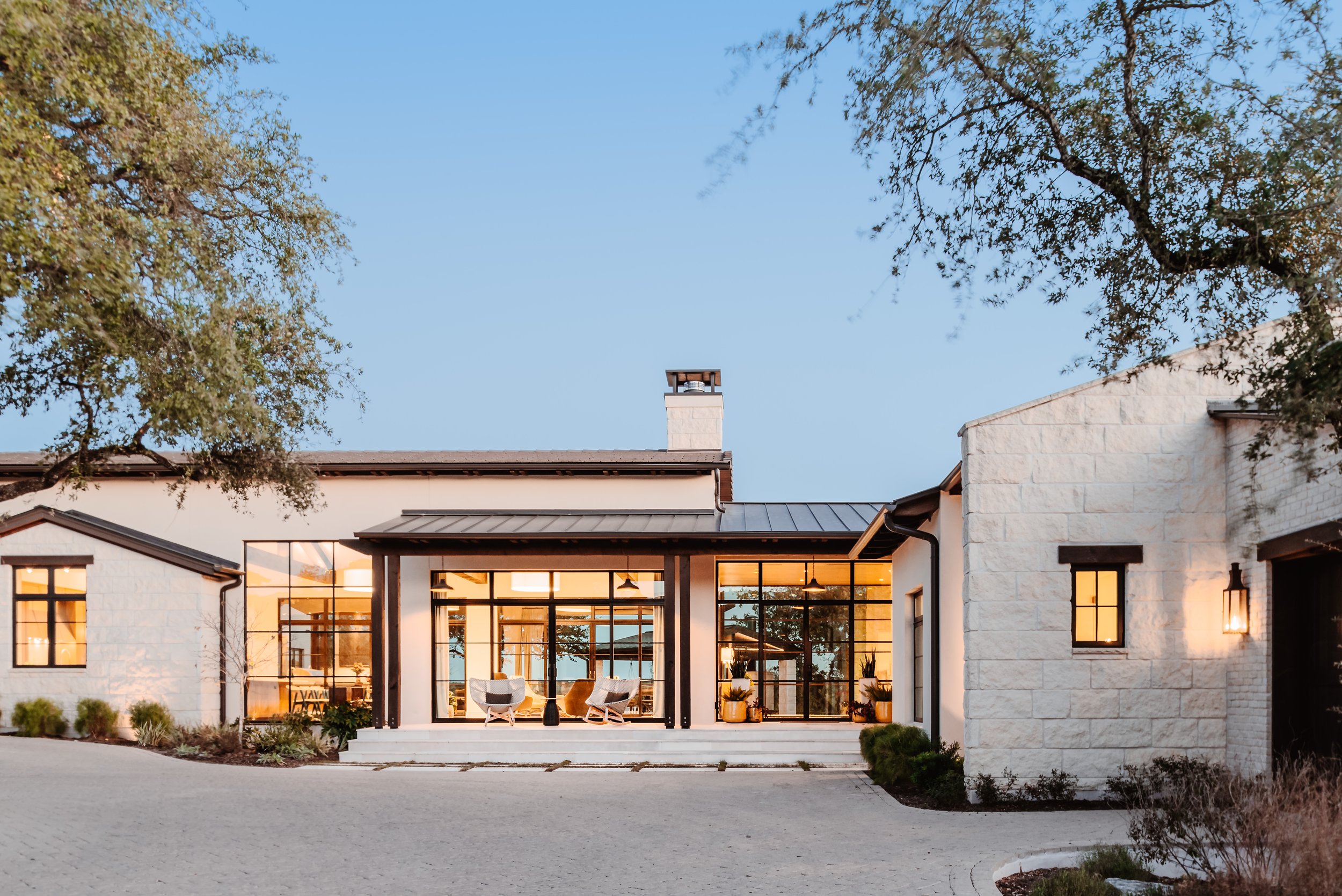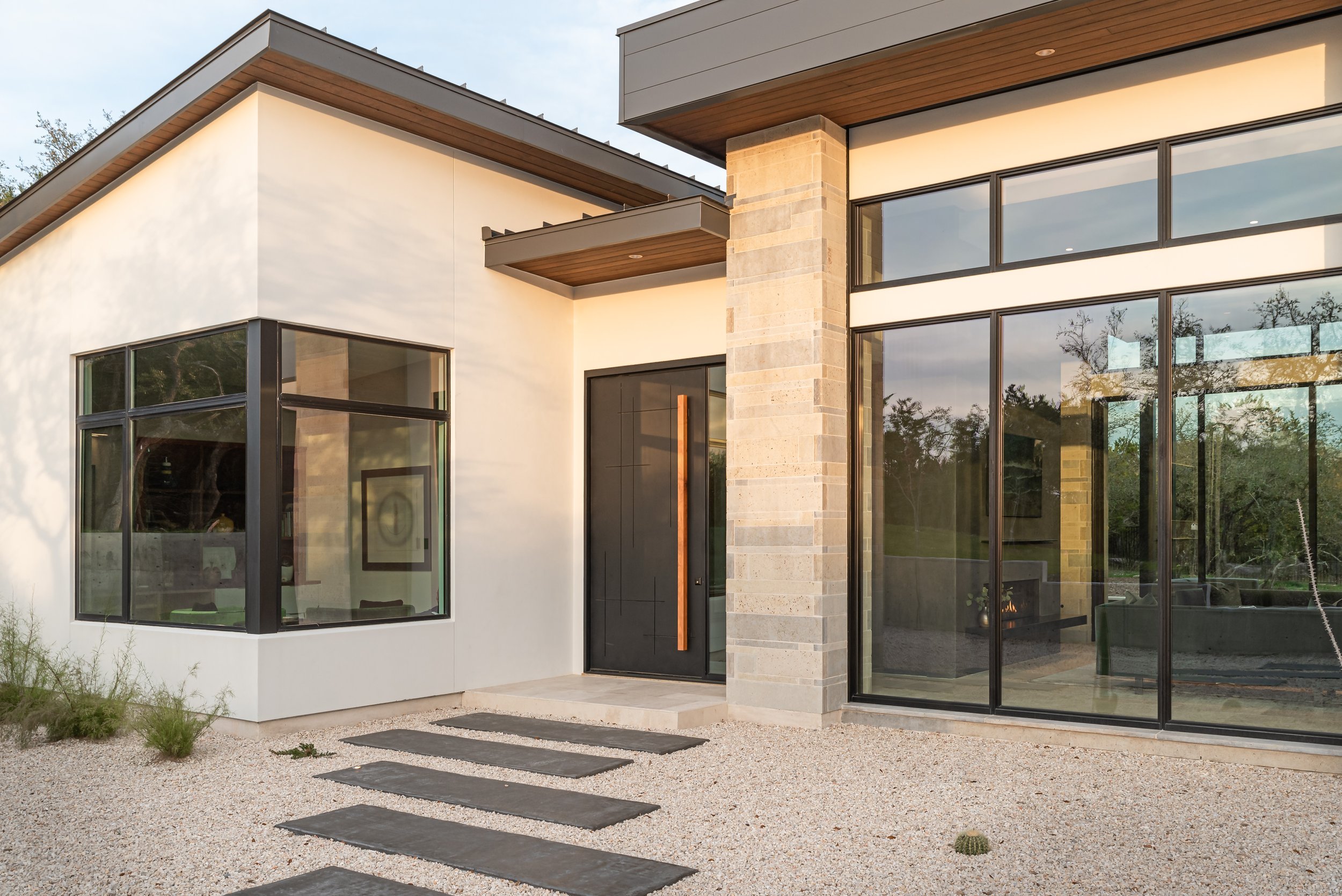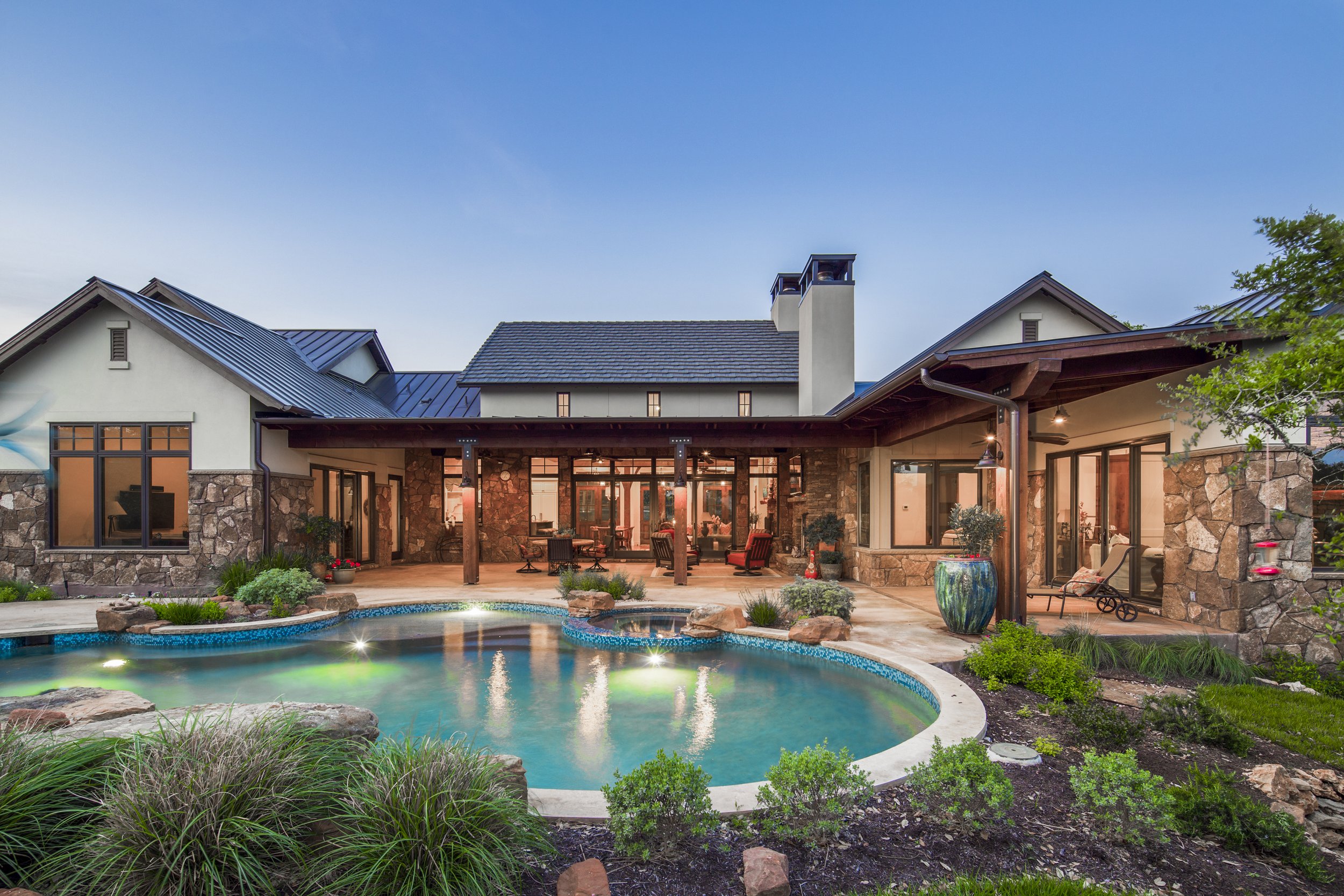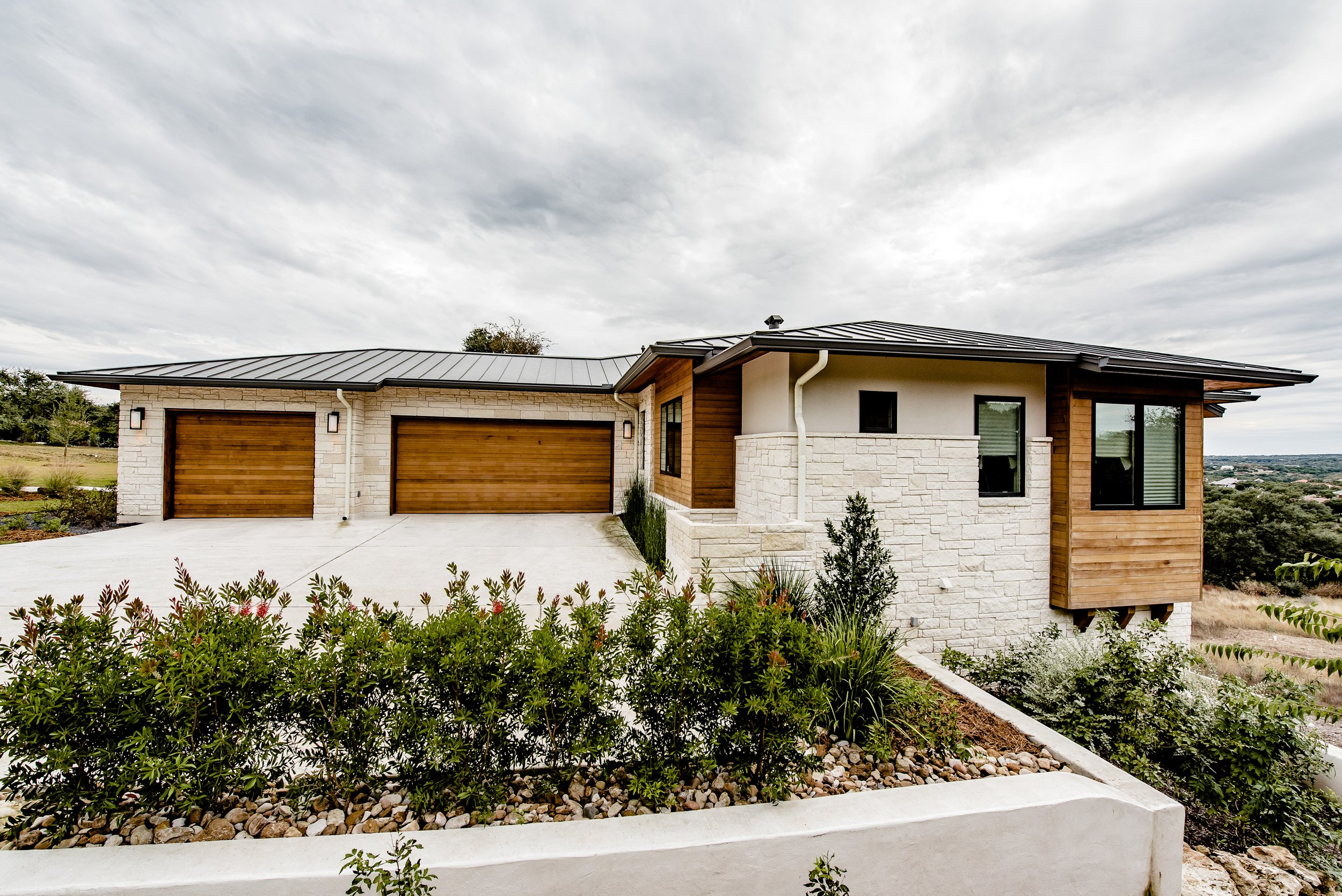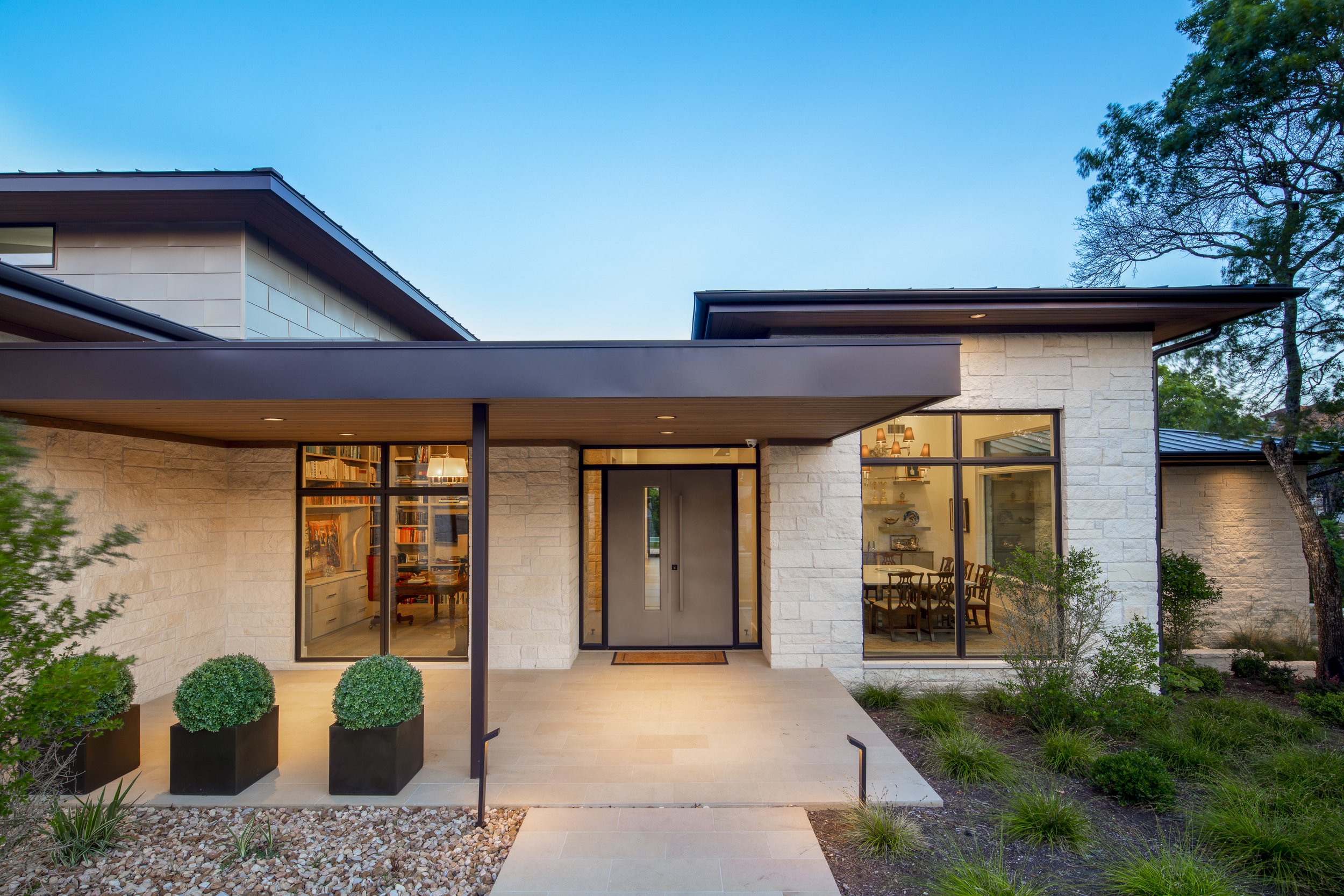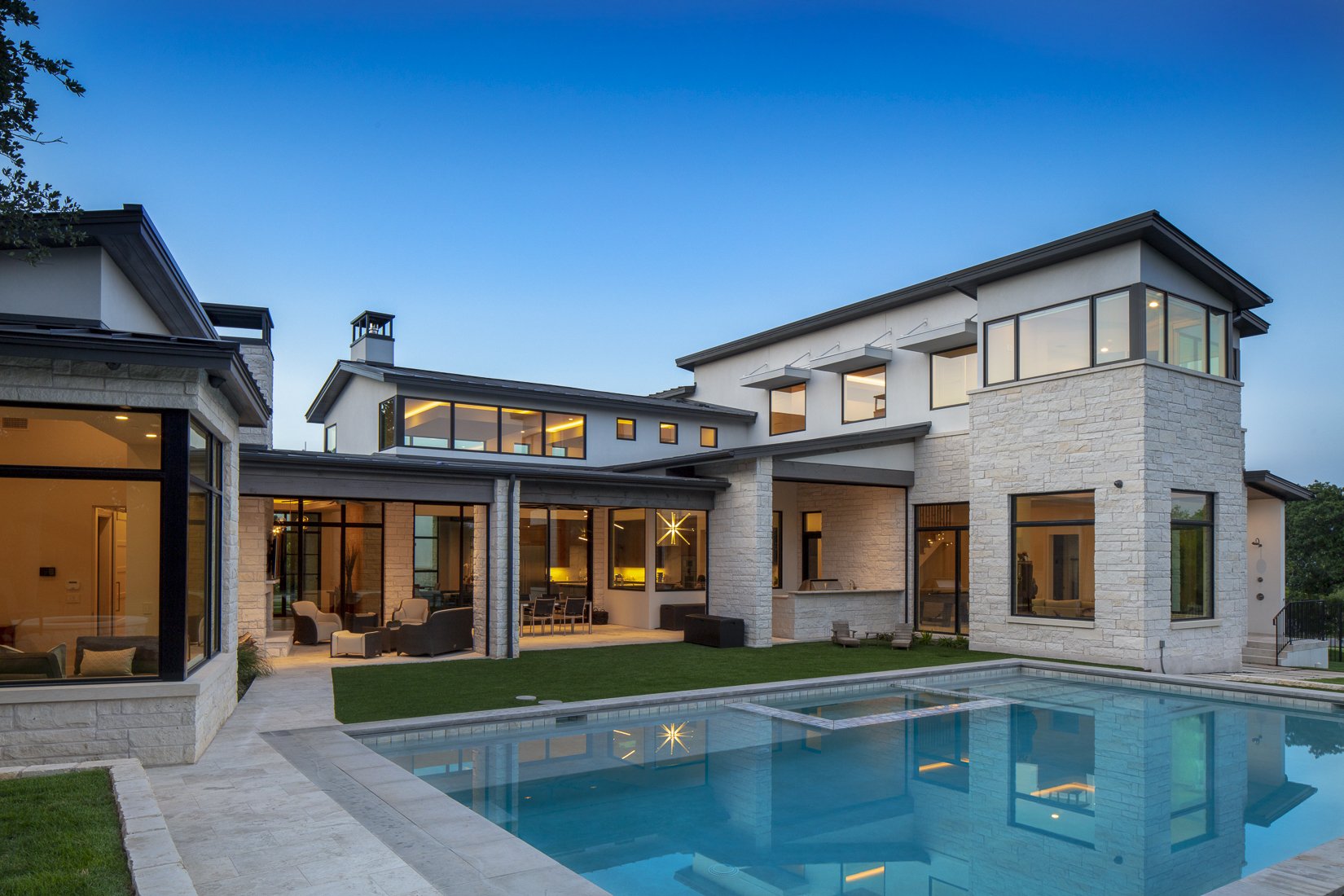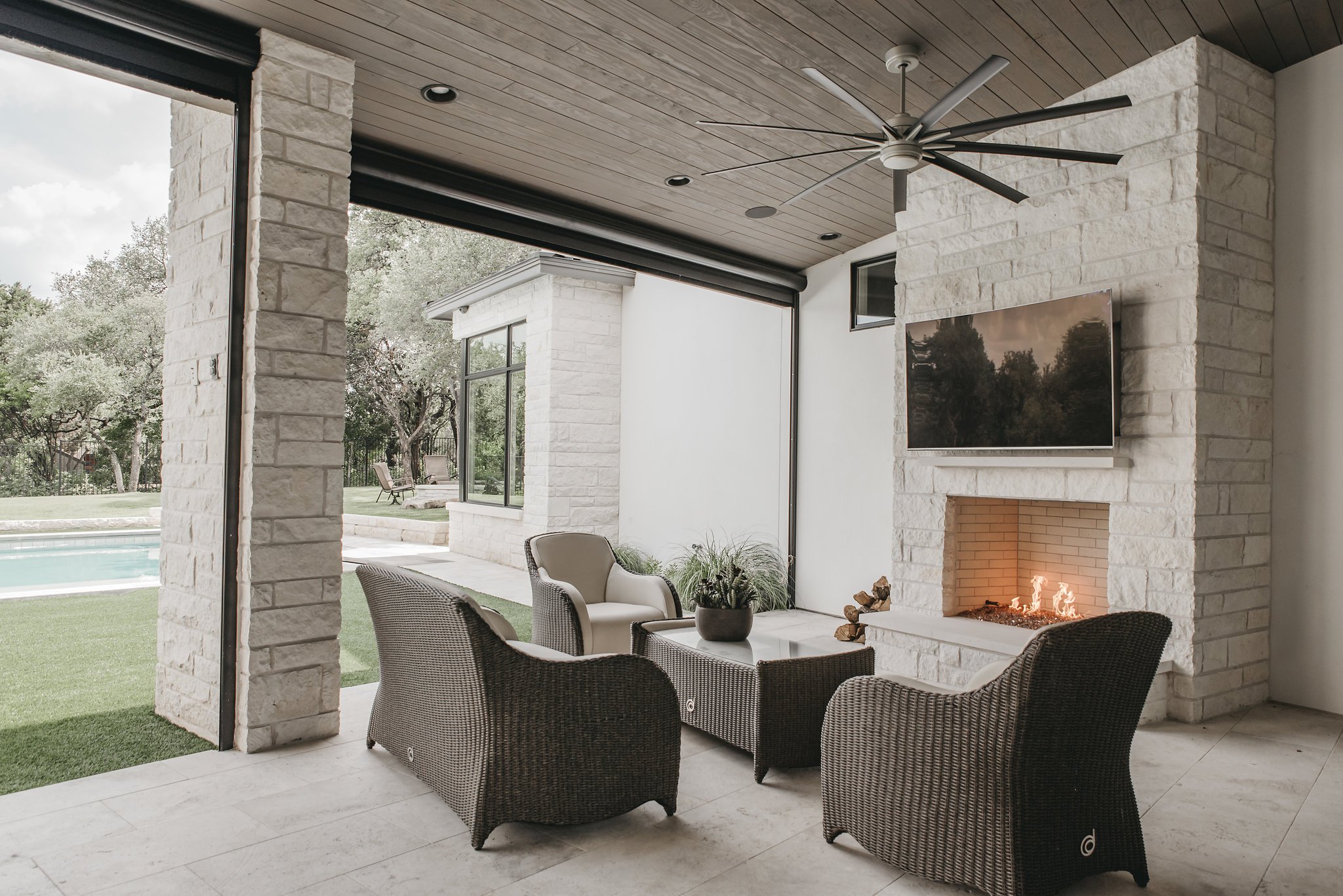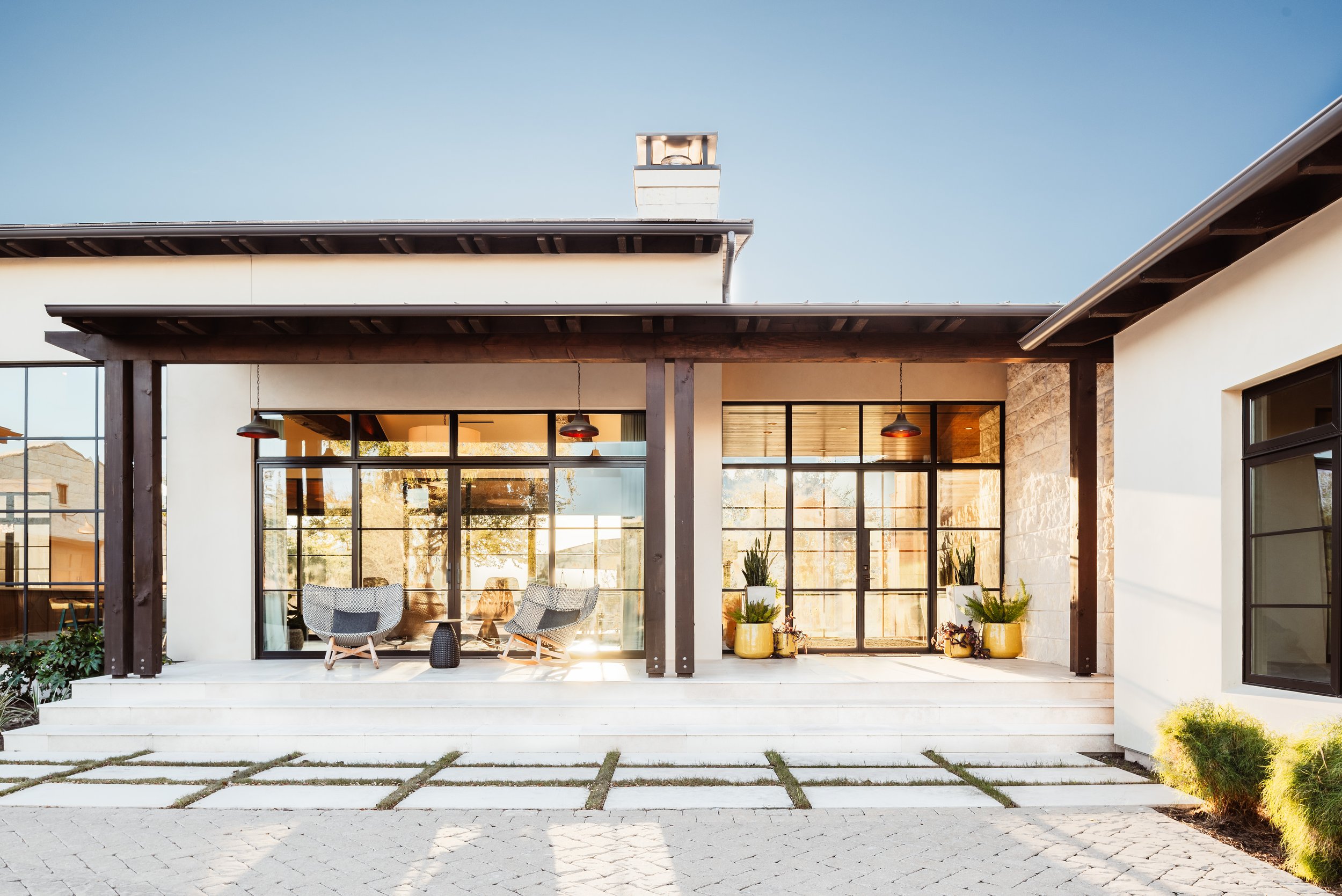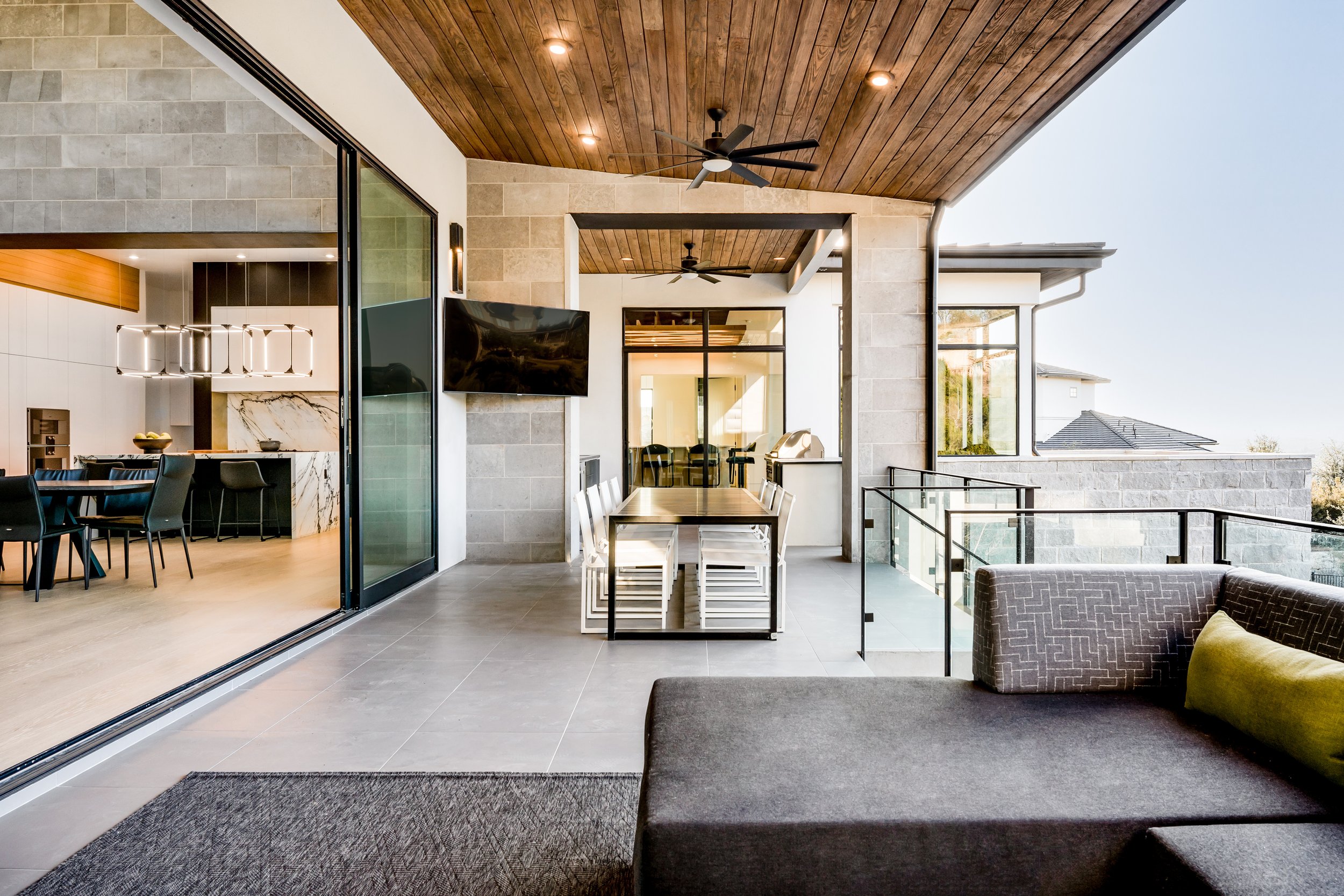Interior Design Starts With a Welcoming Home Exterior
An interior designer talking about exterior materials? While our job focuses mainly on developing the style and finishes inside the home, as interior designers, we also work with clients on selecting exterior home finishes like masonry, siding, and roofing. Choosing the best exterior materials for your home involves creating a welcoming exterior that gives you an idea of what lies inside. Basically, your exterior masonry choice should be stylistically consistent with your interior flooring, paint colors, and furnishings.
To help you in your journey of choosing exterior design finishes, I’m sharing my guide on exterior surfaces and the key considerations to keep in mind when selecting your materials.
My Guide to the Best Exterior Materials for Your Home
Home Exterior Material 1: Masonry
Masonry includes brick and stone. I appreciate both, so the decision depends on the style of the home and the surrounding materials. I’ll focus on stone because the choices tend to be more nebulous.. The top considerations for stone are color, size, and texture. Ask yourself. Do I want warm or cool tones? High variation or low variation? Smooth surface or rough? These factors play a role in selection, installation, and price.
Texas Natural Stone Types
As an Austin-based interior designer, the most common stone I use in my projects is Texas Limestone. (Stone popularity tends to vary by region because importing heavy blocks can be cumbersome and expensive!) While white Limestone may come to mind first, many color variations exist. For example, Lueders Limestone (quarried in Lueders, TX) has mostly gray undertones and offers both light Buff and darker Charcoal options.. Another common Texas stone is Sandstone, which has warmer brown and gold tones.
Pro Tip: Test Your Masonry Selections
The best way to narrow down your preferences is to find houses you like and show them to your project team. Remember, certain factors increase the price. For example, smooth cut stone takes more time to produce than rough cut stone. Discuss aspects like this upfront and familiarize yourself with the tradeoffs. As with any natural material, stone varies from quarry to quarry and batch to batch. Always ask for a sample wall first, even if you think you have landed on your final selection.
Charcoal Gray Lueders and White Limestone
Home Exterior Material 2: Siding
Siding is an exterior material packed with lots of personality. With siding, you can choose from unlimited material type, style, and color combinations. While styling siding can be fun, you must consider durability, maintenance, and cost.
Siding Material Types
Moderate Priced Sidings Include:
Natural Woods: Beautiful, Natural, High Maintenance
Wood Composites: Man-made, Durable, Low Maintenance
High-End Priced Sidings Include:
Metal: Beautiful, Modern, Low Maintenance
Shou Sugi Ban: Unique, Storied, Low Maintenance
Now, I need to explain and “nerd out” more about Shou Sugi Ban. Dubbed SSB for short, this wood is treated using an ancient method from Japan, where you pre-burn the siding to make it incredibly stable and low maintenance. I love the unique look, but it comes with a price tag. My favorite local supplier for this is Delta Millworks, and I often incorporate their products as both interior and exterior accents. In particular - I just love their Shou Sugi Ban!
Siding Installation Styles
In addition to the material itself, you’ll want to think about the installation style. Popular options include tongue and groove, lap, shiplap, shingle, and board & batten. There are also more specific decisions to look at within each category, because of course there are! For example, tongue and groove siding with a V-groove profile is appropriate for a traditional home, but a dime gap profile better suits a contemporary house. Again, there are a lot of choices out there when it comes to siding, so you need to think ahead. Better yet, hire a professional to do some of the heavy thinking for you!
Pro Tip: Don’t Forget the Soffits
Don’t forget! The siding category includes soffits, the undersides of your roof overhang. If you’re doing new construction or an addition, decide whether you want your soffits to be painted or stained and add it to your mood board and budget. One time, I had a project where the clients fell in love with light-colored stained wood soffits. However, they were more expensive than the painted soffits they budgeted for. Review all your options early to prevent heartbreak down the road.
Dime Gap Hemlock Soffit, Metal Siding, and Shou Sugi Ban
Home Exterior Material 3: Stucco
Believe it or not, stucco is one of the most controversial exterior home materials out there! I like stucco, but many people have had bad past experiences when it wasn’t installed correctly. Without the attention to detail of a professional install, stucco is prone to cracking, moisture retention, and discoloration over time. So, hire a good stucco contractor!
Stucco Types
There are 2 main types of stucco.
Standard Stucco is raw stucco coated with either paint or an elastomeric coating.
Integral Stucco is stucco with incorporated color pigments. This means there is no need for paint. As a bonus, any chips or cracks will not disrupt the color because it’s part of the material. Integral stucco is my preferred type. Certain brands even carry smooth versions that show variation and read more like Venetian plaster. I occasionally bring the stucco from the exterior into the interior when using this type. (Remember when I said the exterior and interior of a home must relate to each other?) One of my favorites for this strategy is a brand called La Habra.
Pro Tip: Mind Your Expansion Joints
Remember, stucco requires expansion joints. These joints prevent cracking from expansion and contraction caused by weather changes. Most architects and builders will help you plan these and know the technical specs. Expansion joints are required every 144 square feet or no more than 18 feet apart. They must be intentionally organized, so you don’t have random lines disrupting your facade. For example, some architects start around windows or create a grid centered within a given space.
La Habra and Integral Stucco
Home Exterior Material 4: Roofing
While it’s easy to get caught up in siding, paint colors, and detail work, your roof makes one of the biggest impacts on your home exterior. And, you guessed it. There’s a wide variety of materials to consider! The most common material I see in Austin is asphalt shingles, but I like to use more creative options in my projects.
Roofing Material Types
Tile shingles made of clay or concrete are an upscale alternative to asphalt shingles that will have increased durability.
Standing seam metal offers a clean, modern look, but many people have questions when I bring up this roof type. Clients often ask if a metal roof is loud and if it gets hot. Honestly, I have not found either to be the case. In fact, metal is one of the most energy-efficient materials on the market. One consideration I point out to clients is to be aware of a condition called “oil canning.” Metal panels show rippling over time, and it’s a common misconception that it’s due to poor installation. In reality, it’s just part of the material. The best way to avoid “oil can” ripples is to choose panels with striations. Personally, I prefer a smooth roof with a bit of natural oil canning over one with ridges. However, the choice is yours. Just make yourself aware of your selection’s pros and cons.
Pro Tip: Mix It Up
Can’t choose just one material? Mix it up! On expansive homes, I use a combination of roof materials. It helps to break things up and add interest. Sometimes, I use tile on the house's core and metal on the adjoining sections. The strategy depends on the style of the house, but my point is you can have a little fun with it. Home design doesn’t have to be all or nothing.
Combo Roofs and a Metal Roof
Home Exterior Material 5: Fascia
The fascia is the board that runs below the perimeter of the roof. Basically, it’s the border transition between the roof and the soffit. Think of it as an exterior crown molding of sorts. Like interior trim work, you have to select a color. The key indicator for me is the roof color. I tend to like a dark fascia, but you will also see light fascias that match the house trim color. The style of the house ultimately drives this decision for me.
Metal Fascia and Standard Fascia
Home Exterior Material 6: Patio Flooring
Last but not least, let's address patio flooring. At the most basic level, patio surfaces are finished in concrete, and some clients opt to leave small entry porches or stoops unfinished. However, both large and small patio slabs benefit from the visual interest of tile. However, you can’t use just any tile outside. There are special considerations for outdoor tile because it is exposed to the elements, and smooth surfaces can pose a slip hazard with water pooling.
Exterior Tile Types
Natural Stone: Weather Resistant, Non-slick Texture, Multiple Thicknesses
Porcelain: New Developments, Durable, Moderately Priced
Pro Tip: Think About Thickness
Pay attention to thicknesses, especially as the tile transitions across different spaces such as pool decks, dry-laid pavers, or entry into the house. The larger a tile becomes, the more thickness it needs to avoid cracking. Therefore, a key consideration is changing tile thickness from one area to the next.
Limestone Patio Tile, Travertine Patio Tile + Pavers, and Porcelain Patio Tile
The Bottom Line: Exterior Home Design Welcomes You Inside
As you can see, there are many exterior home design choices to consider before you even cross the threshold! All of these exterior material choices work together to create curb appeal and should give visitors a clue to what lies inside. Do your homework and make decisions that fit your style, budget, and maintenance needs. Remember to trust the experts and seek guidance from your designer. There’s a lot to learn and keep track of, and the experience of a professional is valuable.
Stick through it! The design process will guide you to a fabulous home for your family, both visually and functionally, if you approach it the right way.


